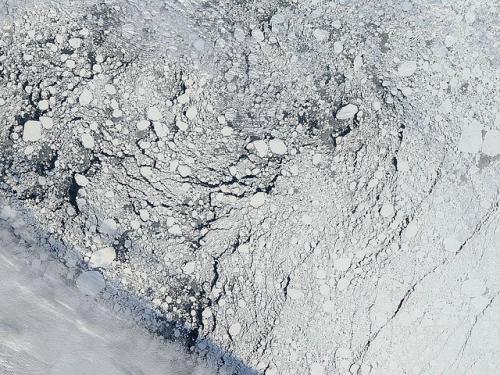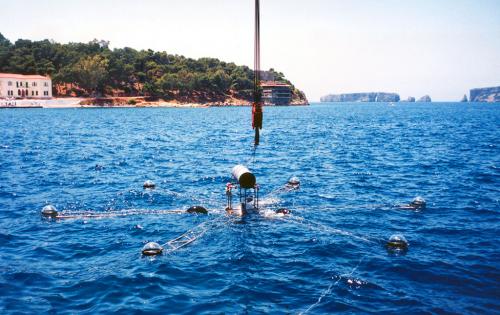Science
Seasonal Arctic summer ice extent still hard to forecast, study says

An image of an area of the Arctic sea ice pack well north of Alaska, captured by the MODIS instrument on NASA's Aqua satellite on Sept. 13, 2013, the day before the National Snow and Ice Data Center estimated Arctic sea ice to have reached its minimum extent for the year. A cloud front can be seen in the lower left, and dark areas indicate regions of open water between sea ice formations.
- Read more
- 320 reads
Nestor: unravelling the universe’s mysteries from the bottom of the sea

In Pylos an underwater telescope is being developed to help track neutrinos.
- Read more
- 328 reads
Revolutionary solar cells double as lasers

This is an image of the laboratory in which the research was conducted.
- Read more
- 301 reads
Harper Government Announces Support for U of S Nanoscience Research: Uses for New Nanostructured Coatings Range from Biomedical to Oil Sand Sectors
The $183,946 investment from Western Economic Diversification Canada (WD) will help Canada Research Chair in Nanoengineering Coating Technologies and Professor of Mechanical Engineering, Qiaoqin Yang, and her team purchase specially-made equipment that will apply the coatings to the surfaces of the components for testing and demonstration. Four industry-specific coating prototypes will be tested, for projects such as solar energy systems, artificial joints, and mining and oil sands equipment. The coatings will be comprised of new, extremely durable advanced materials.
- Read more
- 328 reads
High-quality nanometric bilayers prepared by aqueous solutions

Quality comparison of the 15 nanometres layers obtained by PAD (chemical deposition) or PLD (pulsed laser deposition).
- Read more
- 406 reads
cientists Track 3D Nanoscale Changes in Rechargeable Battery Material During Operation: First 3D nanoscale observations of microstructural degradation during charge-discharge cycles could point to new ways to engineer battery electrode materials for bette

These images show how the surface morphology and internal microstructure of an individual tin particle changes from the fresh state through the initial lithiation and delithiation cycle (charge/discharge). Most notable are the expansion in overall particle volume during lithiation, and reduction in volume and pulverization during delithiation. The cross-sectional images reveal that delithiation is incomplete, with the core of the particle retaining lithium surround by a layer of pure tin.
- Read more
- 361 reads
The Search for Seeds of Black Holes

The galaxy NGC 4395 is shown here in infrared light, captured by NASA's Spitzer Space Telescope.
- Read more
- 350 reads
World's first flexible multi-functional timer to be distributed at Printed Electronics Europe
Led by IDTechEx, partners included consumer goods company Procter & Gamble, printed logic company PragmatIC, printed battery supplier Blue Spark Technologies, conductive ink and photonic curing equipment supplier NovaCentrix and Cal Poly, who designed and printed on the paper substrate.
- Read more
- 450 reads
NASA's Spitzer Telescope Brings 360-Degree View of Galaxy to Our Fingertips

When you look up at the Milky Way on a clear, dark night, you'll see a band of bright stars arching overhead. This is the plane of our flat spiral galaxy, within which our solar system lies.
- Read more
- 395 reads
Human Rights
Fostering a More Humane World: The 28th Eurasian Economic Summi

Conscience, Hope, and Action: Keys to Global Peace and Sustainability

Ringing FOWPAL’s Peace Bell for the World:Nobel Peace Prize Laureates’ Visions and Actions

Protecting the World’s Cultural Diversity for a Sustainable Future

Puppet Show I International Friendship Day 2020


